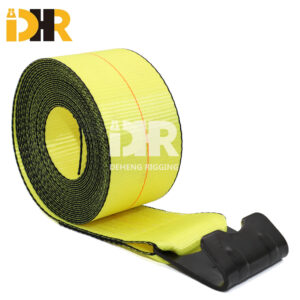What Is a Winch Bar?
A winch bar (also called a winch handle, winch crank, or winch lever) is a manual tool used to operate winches, particularly in towing, recovery, marine, and industrial applications. It provides leverage and control when winding or unwinding cables, chains, or ropes on a winch drum.
Key Features of a Winch Bar:
✔ Durable Construction – Made from high-strength steel or alloy for heavy-duty use.
✔ Ergonomic Handle – Designed for comfortable grip during prolonged use.
✔ Compatibility – Fits most standard winches (e.g., trailer winches, boat winches, recovery winches).
✔ Safety Enhancements – Prevents hand slippage and reduces injury risk.
Types of Winch Bars
1. Standard Winch Bars
- Used for basic winching tasks (e.g., boat trailers, utility winches).
- Typically 18-24 inches long for moderate leverage.
2. Heavy-Duty Winch Bars
- Thicker and longer (up to 36 inches) for high-tension winching (e.g., off-road recovery, industrial loads).
- Often includes non-slip grips or swivel handles for better control.
3. Folding Winch Bars
- Compact & portable – Ideal for 4×4 recovery kits and marine use.
- Locking mechanism prevents accidental folding during operation.
4. Ratcheting Winch Bars
- Allows one-directional cranking for easier, smoother operation.
- Common in boat trailers and industrial winches.
Why Do You Need a Winch Bar?
✅ Increased Control – Provides better leverage than hand-cranking.
✅ Safer Operation – Reduces hand fatigue and slippage risks.
✅ Faster Winding/Unwinding – Speeds up winching tasks.
✅ Versatility – Works with truck winches, boat trailers, off-road recoveries, and more.
How to Choose the Right Winch Bar?
1. Check Compatibility
- Ensure it fits your winch’s socket size (common sizes: ½”, ¾”, or 1″).
2. Consider Length & Leverage
- Longer bars = more torque (better for heavy loads).
- Shorter bars = more portable (good for light-duty use).
3. Material & Durability
- Steel – Best for heavy-duty use.
- Aluminum – Lighter but less durable.
4. Grip & Ergonomics
- Look for rubberized or textured handles for better grip.
5. Additional Features
- Folding design (for storage).
- Ratcheting mechanism (for smoother operation).
Proper Use & Safety Tips
✔ Inspect Before Use – Check for bends, cracks, or wear.
✔ Use Gloves – Prevents blisters and improves grip.
✔ Maintain Proper Posture – Avoid back strain by bending knees, not your back.
✔ Never Overload – Stay within the winch’s rated capacity.
🚨 Common Mistakes to Avoid:
- Using a bent or damaged winch bar (can fail under load).
- Standing in the “snap zone” (danger area if the cable breaks).
- Forcing the bar (indicates winch malfunction or overload).
Winch Bar vs. Other Winching Tools
| Feature | Winch Bar | Electric Winch Remote | Hand Winch |
|---|---|---|---|
| Operation | Manual | Motorized | Manual |
| Portability | High ✅ | Moderate ❌ | High ✅ |
| Control | High ✅ | Moderate (depends on motor) | Low ❌ |
| Best For | Precision adjustments | Heavy-duty remote use | Light-duty pulls |
Conclusion: A Must-Have for Safe & Efficient Winching
A winch bar is an essential tool for anyone using manual winches—whether for towing, off-roading, boating, or industrial lifting. Choosing the right length, material, and grip ensures safe, smooth, and efficient operations.
🔧 Pro Tip: Keep a spare winch bar in your recovery kit for emergencies!

